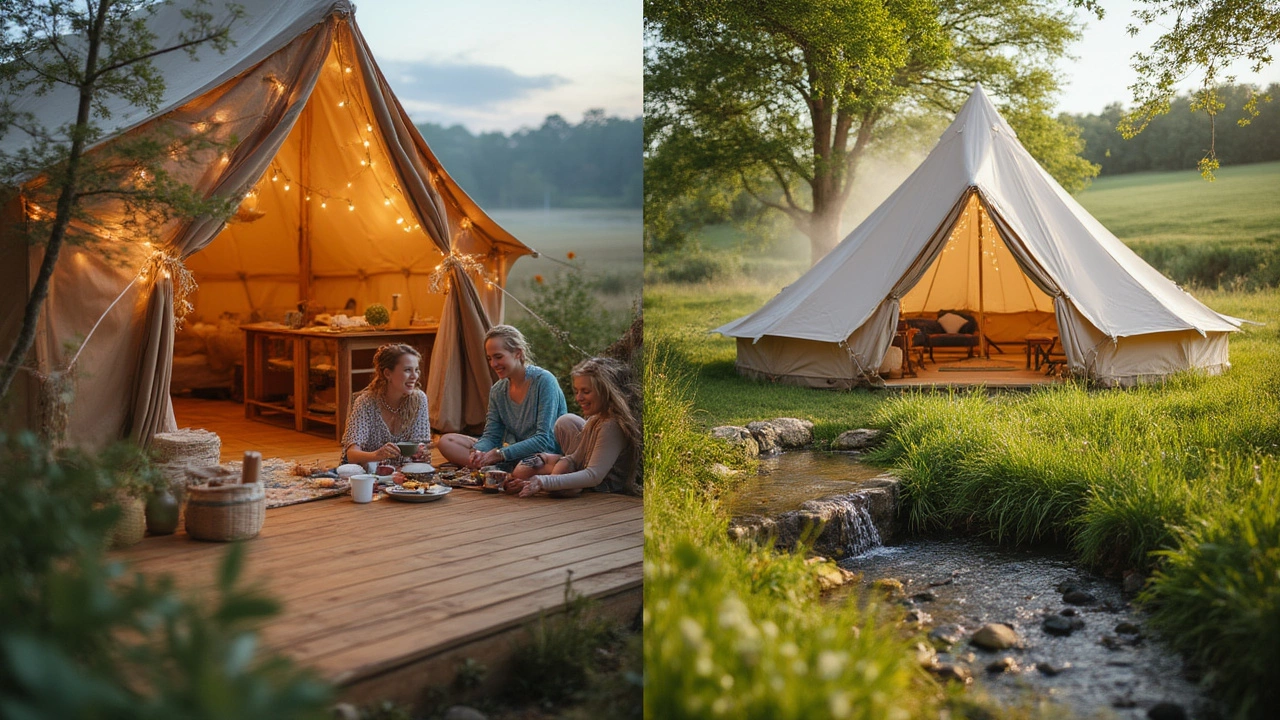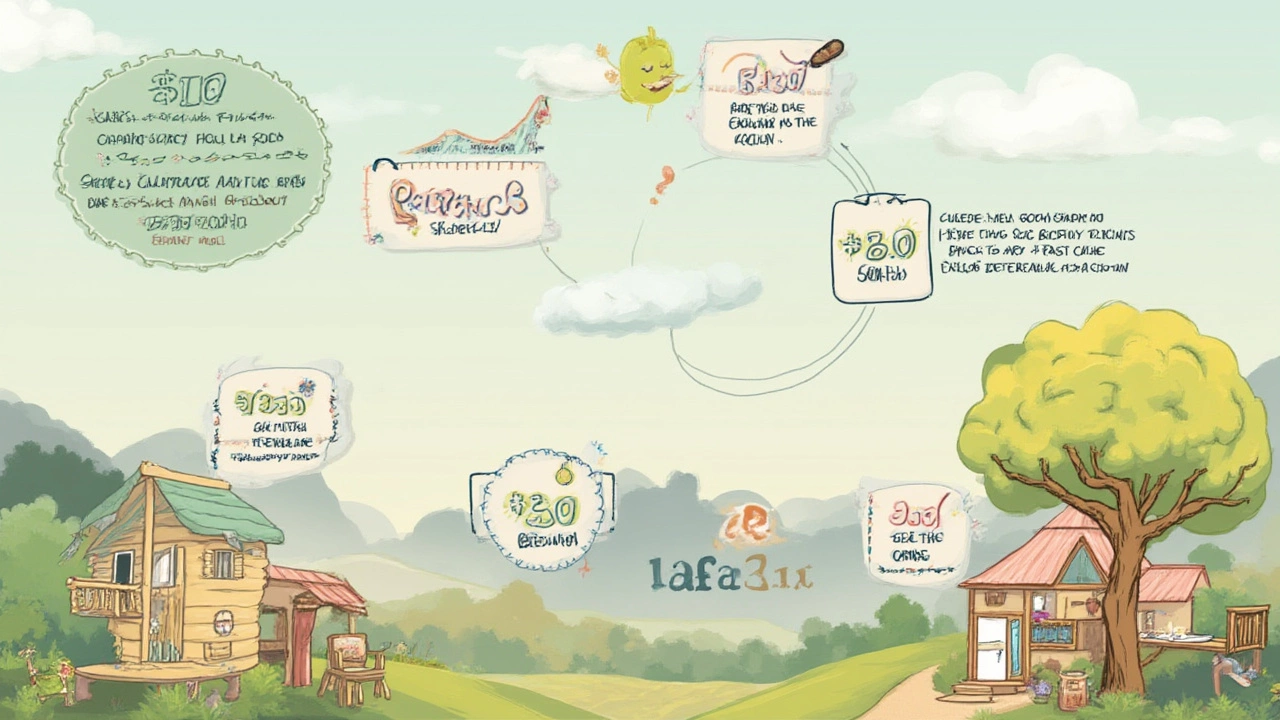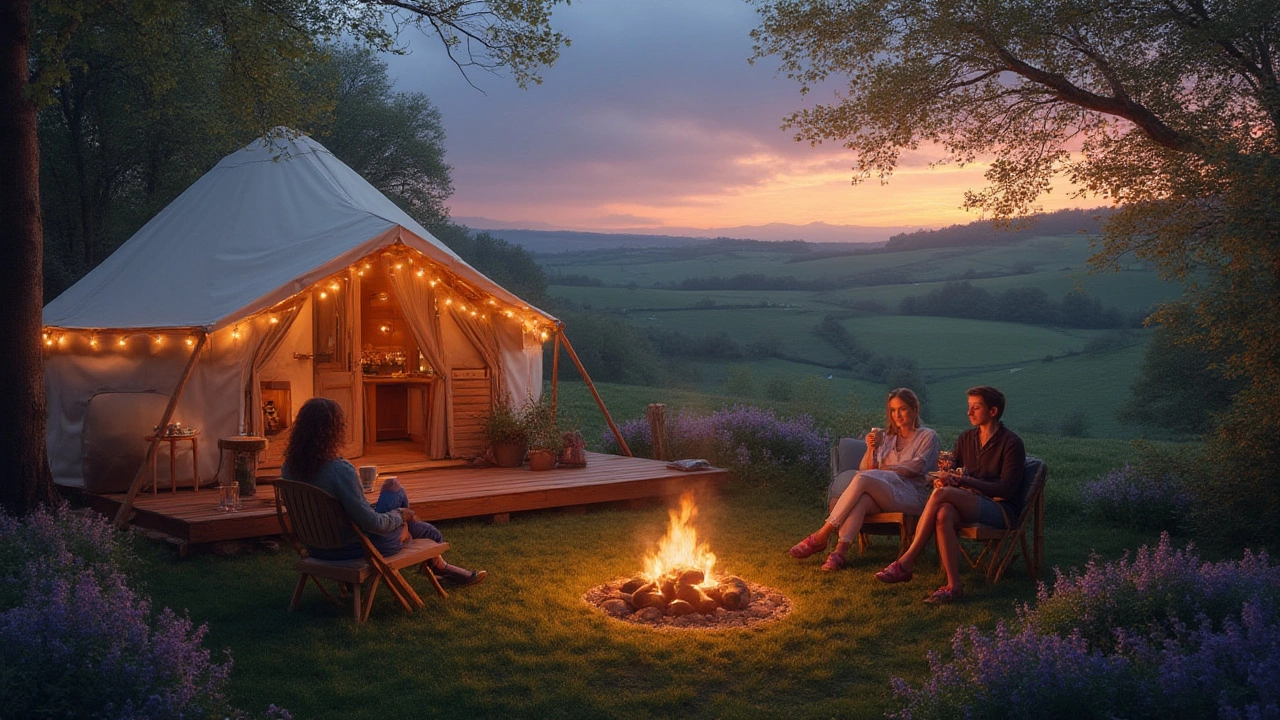Ever scroll past dreamy tents on Instagram—think lantern-lit domes in forests and safaris with real beds—and wonder, “How much does glamping actually cost per night?” Spoiler: it’s not just for trust-fund adventurers or honeymooners with a Hollywood budget. Glamping costs swing wildly, from “hey, this is cheaper than a city hotel!” to “okay, that’s my rent for the month.” Before you type in your card details, let’s crack open the real numbers and what really makes the price jump. Knowing where the money goes (and how to snag sweet deals) means you can stop dreaming and start packing.
The Wild Range of Glamping Prices Explained
People love tossing around the word “glamping,” but let’s be honest, it covers everything from a basic bell tent at the edge of a farm to a jaw-dropping treehouse suite stocked with champagne and heated floors. The average cost per night? According to a 2024 report by GlampingHub, nightly rates in the U.S. hover between $80 and $550, but the full range is even wider. Basic yurts or platform tents might cost as little as $50, while luxury domes and tricked-out Airstreams in prime locations can soar past $1,200 per night. Crazy, right?
City vs. country matters a lot. Glamping outside Austin or Asheville? Expect $125–$275 for something nice but not over the top. In off-the-radar spots like Vermont forests or Southern deserts, $80–$150 gets you scenic quiet, a comfy bed, and maybe even a private firepit. But just try booking an overwater safari tent in the Florida Keys, or a vintage camper with private chef service near Malibu—now you’re flirting with four figures a night.
There’s a reason for the chaos. Glamping is less about grabbing a tent and more about the experience: think real mattresses, big duvets, quality meals, air conditioning, and, in many cases, a bathroom *not* shared with fifty other campers. Even showers with rainfall heads pop up in the wild. The setting matters, too. You’ll pay more for epic views, waterfront access, or if you want to bring the whole pack (think glamping pods that sleep six, or dog-friendly options with a fenced yard).
For folks who want specifics, here’s a snapshot:
| Type of Glamping | Typical Price (per night) |
|---|---|
| Budget Tent/Yurt | $50–$120 |
| Mid-Range Safari Tent/Cabin | $125–$295 |
| High-End Treehouse/Dome | $320–$750 |
| Ultra Luxury (Airstream, Villa, Private Island) | $800–$1,500+ |
Most folks settle somewhere in the $150–$300 range—a sweet spot for comfort and style without sticker shock.
Why Do Glamping Prices Vary So Much?
The secret sauce behind glamping costs? It comes down to location, amenities, and the season. Glamping in a national park with a killer view is naturally going to cost more than a grassy pop-up just off the highway. Parks in Sedona, Yosemite, or the Lake District (if you’re hopping over to the UK) see much higher demand, especially around holidays and school breaks. Some hosts drop rates by 30% in off-peak times—so that $350 Montana safari tent might go for $210 if you’re willing to sleep under the stars in May instead of July.
The amenities run the price band up dramatically. You’ll see places advertising everything from wood-fired hot tubs (expect to pay another $40–$90 per night) to in-tent spa treatments. Some glampsites roll out breakfast baskets with organic eggs and fresh muffins, while others charge extra for dinners, guided hikes, or sunset wine tastings. (Tip: Always check whether meals are included. I once got burned with an $80 delivery pizza when staying in an Instagram-famous dome in the middle of nowhere.)
Don’t forget the basics like heating, AC, and actual bathrooms—these aren’t standard! A tent with no climate control or bathroom nearby will run cheaper, sure, but the upgrade for en suite plumbing and temperature control can tack on $50–$200 a night. For me, splurging for a private bathroom’s often non-negotiable—let’s just say I’ve learned the hard way after some awkward middle-of-the-night adventures involving wandering raccoons and cold mud.
Another price influencer: capacity. Solo glamping’s often the priciest per person (that luxury dome rarely gets filled by one), but travel with friends or family, and lots of mid-range glampsites charge by the unit. It becomes much better value per head when you split a $400 treehouse between four people for a long weekend of board games and marshmallows.

Digging Into Hidden Costs (And Where to Find Value)
It’s easy to get drawn in by a base rate, but glamping is notorious for add-ons. Cleaning fees, pet fees, firewood bundles, and, sometimes, local taxes pile onto your bill. Double-check the fine print before booking. Always ask: are linens provided, or do you need travel sheets? Any deposit or service charge? Breakfast included, or should you shop before arriving?
A big tip: Avoid impulse booking on big-name glamping platforms without comparing. Sometimes, the direct host’s website will offer discounts or hidden deals. I’ve found midweek stays to be 15–40% cheaper than Fridays and Saturdays, especially if you’re flexible on timing. If you book longer than two nights, email the host directly—lots will toss in a bottle of wine or reduced cleaning fee just for asking. It never hurts!
Let’s talk food—since you are probably paying a premium for the camping “experience,” see if they do “bring your own supplies” or provide a communal kitchen. Some luxury places upsell fancy picnic baskets or chef-curated tasting menus. Others are BYO everything. If you glam with kids or picky eaters, having a fridge and stovetop can save a bunch of cash (and tantrums).
Transport can be a shocker, too. Some remote glampsites require a boat ride, shuttle, or 4WD rental to reach—usually at extra cost. Add this into your budget before you get swept up in a dreamy sunset photo gallery. One year Lachlan and I ended up paying $60 each for a “rustic” jeep ride to a mountain-top dome. The view was unbeatable, but next time, we’d check Google Maps and our host’s directions first.
Seasonal pricing makes a monster difference. High windows (June–August, holidays) can double prices. If you can glamp “shoulder season,” like late April or mid-September, you’ll get those starry nights with fewer crowds and better rates. Plus, fewer bugs!
When Glamping Is Cheaper Than a Hotel (And When It’s Not)
People love comparing glamping rates to regular hotels. Sometimes, glamping’s the better deal—especially in busy tourist regions where hotels hike up rates fast during summer or festival weekends. Picture this: a family tent with a queen bed and bunk beds near Grand Canyon runs about $200 during July, while hotels push $350+ and don’t offer private campfires or hammocks under ancient pines.
But the scale tips the other way when you’re hunting luxury. Many top-tier glampsites are straight-up more expensive than a decent four-star city hotel. You’re not just paying for the bed, you’re funding the experience: the architecture, design, staff, and privacy. If you want room service, a pool, and chocolates on your pillow, you’ll almost always pay less at a standard hotel. But if a claw-foot tub with a view, a fire pit made for s’mores, and hand-stitched linens set your heart racing, it’s worth the glamping splurge.
Something else to think about: group glamping. A big pod or forest cabin sleeping 4–8 can work out way cheaper than renting two or three hotel rooms. So if you’re planning a birthday bash, bachelor/ette trip, or multi-family sleepover, glamping suddenly makes total financial sense and feels way more epic than sharing a noisy hotel corridor.
For budget travelers, “rustic” glamping is a smart workaround for sky-high city rates or sold-out festival weekends. Think pop-up bell tents at music festivals, or eco-camps with shared bathrooms near mountain trails. Some backpacker-friendly sites let you bring your own linens or food to keep costs rock bottom.
One caveat—always check the refund or weather policy. Heavy rain, wind, or wildfires can cancel glamping trips overnight, and unlike hotels, glampsites sometimes keep your deposit. Travel insurance isn’t just for international trips anymore.

How to Get the Best Value and Turn Glamping Into an Adventure
Keen to glamp without going broke? Start by choosing your season and being flexible. Booking midweek (Sunday–Thursday) instantly cuts costs. Go for “shoulder season” whenever you can—those few weeks after summer break or before the first snow hit are cheaper, and the scenery is still gorgeous.
Use search sites, but double-check the direct websites before booking. Sites like GlampingHub, Hipcamp, and Airbnb Experiences are a start, but sometimes hosts drop last-minute deals or extras if you book direct (especially true for smaller, family-run spots).
If you’re loyal to a site or plan to glamp more than once a year, sign up for the newsletter—they often send early-bird promotions or off-peak deals. Some even have repeat guest discounts. Reviews on forums and social media go a long way, too: look for hidden gems where guests rave about value, or where hosts throw in extras for free.
Pack intentionally. If the site allows self-catering, a cooler and favorite snacks will save money (and late-night cravings). Always bring an extra flashlight or power bank—many glamping spots have limited charging or solar power only. And a hot tip: opt for the places that provide free firewood, breakfast baskets, or kayaks for guests. These aren’t always in the listing headline, but it’s worth digging to find the best perks.
Finally, don’t underestimate the charm (and price) of pop-up glampsites run by farmers, retreat centers, or even music festivals. You trade some amenities, but if you’re just after a night under the stars—and maybe a proper mattress—it’s a budget-friendly, memorable escape. If something fancier calls your name, go for it: glamping isn’t about roughing it, it’s about getting out there in style, comfort, and maybe a dash of wild romance. Whatever your budget, there’s a place for you.
